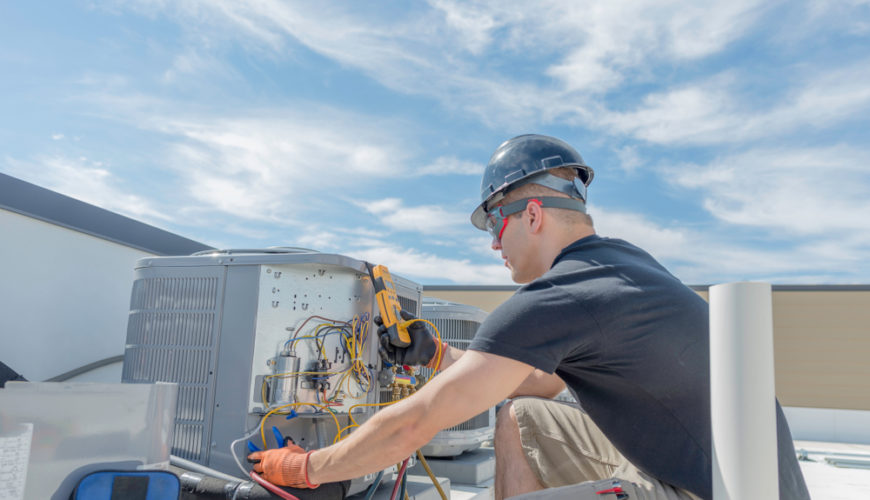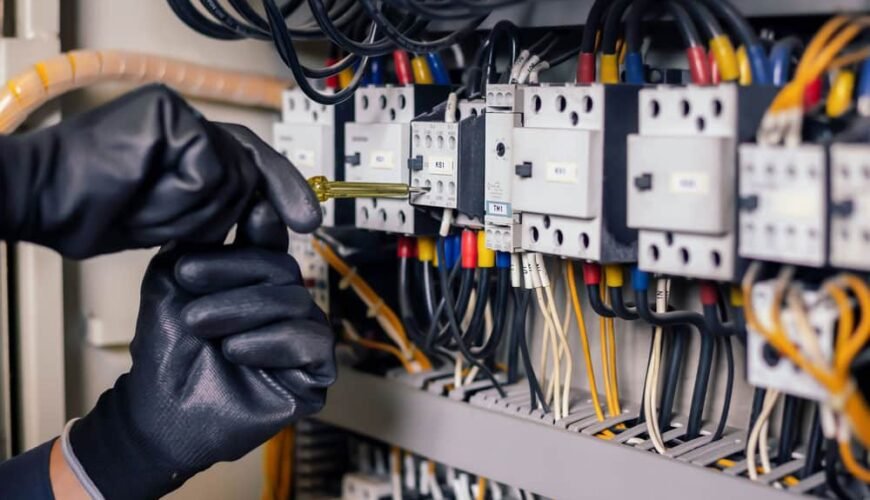Would you like to know how to troubleshoot your HVAC system in case of problems? Even if you are not an expert, you can still learn how to resolve simple issues with your system if you know where to look.
If you still need assistance fixing your HVAC system even after the troubleshooting, it is better to call a professional. You can do that here.
How can you diagnose HVAC problems?
Sometimes your HVAC system doesn’t work correctly, but in most cases, the resolution is as simple as changing the batteries in your thermostat or replacing the filters. If you know where to look, you can troubleshoot the system yourself instead of paying a technician each time there is a problem.
Here are some basics troubleshooting tips for beginners:
-
Always check the thermostat
If there is something wrong with the HVAC system, the first thing to check is the thermostat. For example, if the system is not turning on, you can try changing the settings to lower or higher temperatures and wait to see if the system turns on again.
If the thermostat is broken or faulty, the HVAC system can experience problems such as the system turning on and off at the wrong time. To resolve thermostat issues check if the thermostat is receiving power or, if it works on batteries, make sure they are charged.
If there is nothing wrong with the power, sometimes the settings are incorrect, causing the HVAC to misbehave. It is possible that someone changed the settings or, by mistake, a button was pressed accidentally.

-
Look for power issues
Another simple troubleshooting action is to check the power. If the system is not turning on, you don’t hear any sound, or there is no air coming out of it, there may be a power issue. Maybe the problem is a tripped circuit breaker, a broken wire, or a blown fuse.
-
Verify the state of the filters
If you spot something wrong with the air coming out of the vents, such as excessive dust or humidity, it is possible that the problem is not the HVAC system but dirty filters. Dirty filters can block airflow entirely or partially, making it seem like something is wrong with the system.
For example, the system must work hard to reach the set temperature with dirty filters, leaving your house with poor air quality. Filters can be changed easily by anyone; there is no need for a technician. It is better to routinely change them (typically every 3 to 6 months, depending on the usage).
-
Check the refrigerant level
If the AC system is not sending cool air out or feels sticky, the problem may be the low refrigerant level. The refrigerant is responsible for absorbing the heat and humidity from the air. Without it, the air blown into the house will be warm.
Check the refrigerant levels, and if low, it should be refilled. However, there is a reason if your refrigerant is low. In general, it is due to a leak somewhere in the system. The refrigerant should not decrease in level but is supposed to cycle through the system and change its state from liquid to a gaseous form over and over.
Only a leak can be responsible for a low refrigerant. Therefore, refilling the refrigerant is only a temporary solution and should be followed by a thorough inspection and sealing of all leaks.
-
Resetting the system
A common way to troubleshoot your system when something is not right is to reset the entire system. Each part of the system can be reset; this includes the air conditioner, the furnace, and the heat pump.
To figure out how to reset each part of the system, you should read the owner manual and follow the instructions.

-
Check the vents
If you spot that some parts of the house are not cooled or heated as they should, you can check the state of the vents. A vent can get obstructed or covered by accident. It is also possible that dirt and foreign objects block the airflow passing through the vents.
The solution is to remove the blocks and keep the vents cleaned so that air can move in and out without problems.
-
Look for frozen components
During summer, it is possible that some components of the AC freeze when the system is used for prolonged periods. Frozen components prevent the system from cooling air as you wish.
It is only necessary to turn off the system for a while to resolve the situation, allow all of its parts to unfreeze, and try using the system again.
-
Inspect the ductwork for leaks
The ductwork is an essential part of an HVAC system because all the air circulates through them. Therefore, leaks in the ductwork can cause decreased system efficiency and higher energy bills. In addition, old ducts can get leaked due to everyday wear, and when it happens, you can experience a difference in temperature across the house.
In addition, the system has to work harder to move air inside the house to reach the desired temperature. The solution is to seal all leaks, but you will need the assistance of an HVAC repair Phoenix professional to get that done.
-
Inspect for drains problem
Another widespread issue is a clogged drain line. If the drain line is clogged, moisture collected from the air cannot flow outside the house but will leak inside and potentially damage the system. The obvious solution is to clean the drain line and remove the dirt and debris accumulated.
Conclusion
Even if you do not have a lot of knowledge on how to resolve problems with your HVAC system, checking the most common issues first can already take care of many things without the intervention of a technician.
If you feel that there is still something wrong and need professional help, don’t hesitate to contact us.




